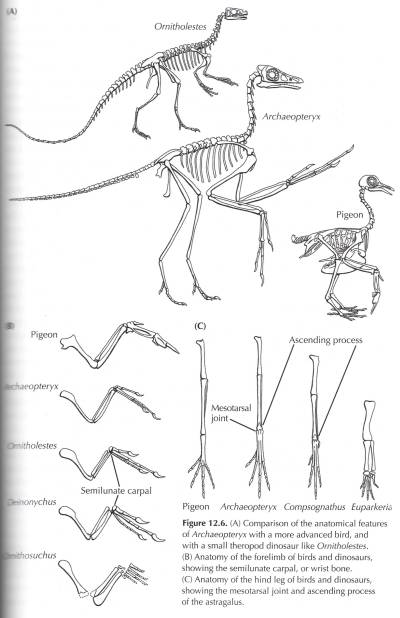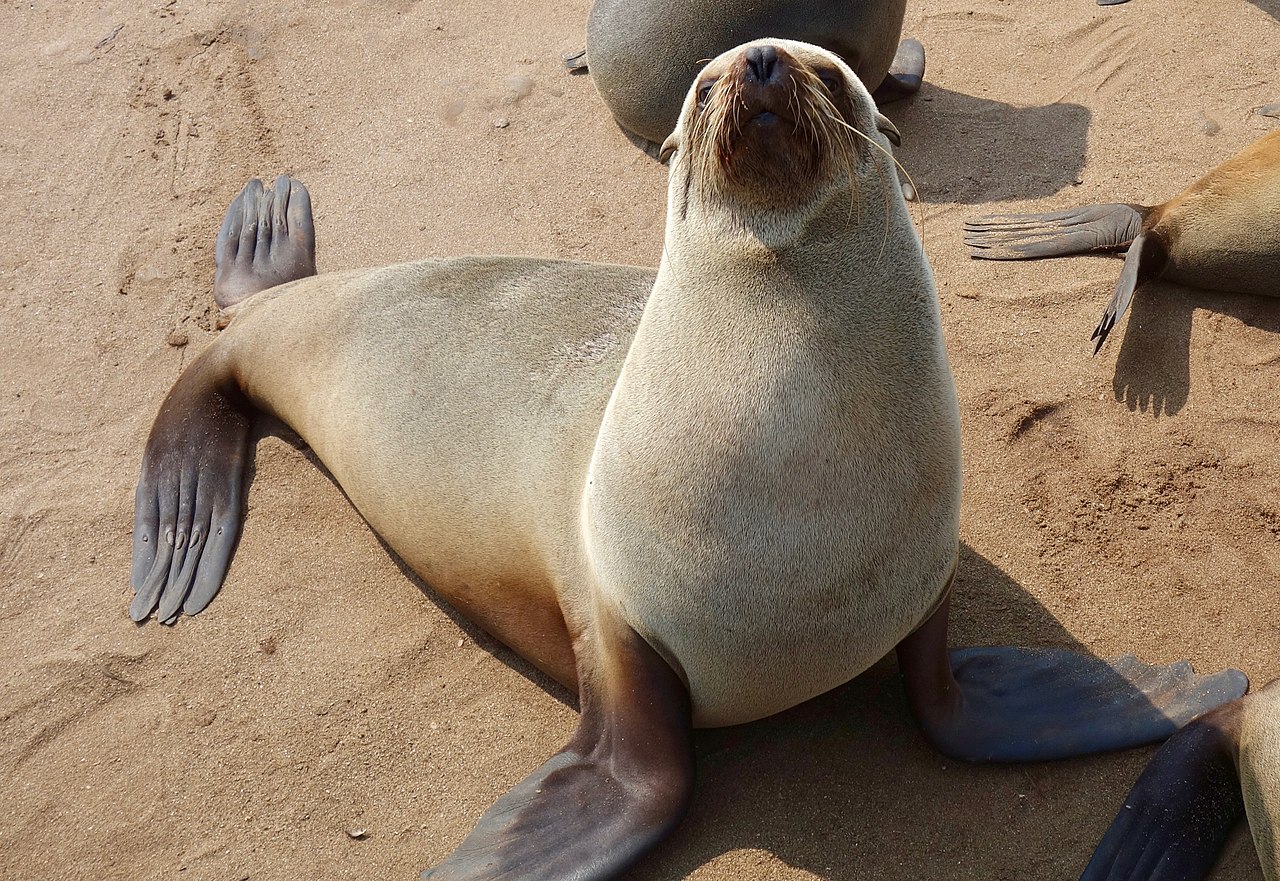Understanding Evolution - Transitional Forms
This entry is part of a collection on Understanding Evolution. For other entries in this collection, follow that link.
This particular entry is adapted from a Quora question. Some of the topics here may seem familiar if you've read some of my other entries on evolution, but they help to make this a standalone essay that makes sense on its own if you haven't read those other entries.
There's an embarrassment of riches when it comes to transitional forms. These can be transitional fossils, but also living creatures that have preserved an ancestral condition. There's even value in looking at modern animals that may not be closely related to animals from a specific transition you're interested in, but which live a similar lifestyle. I'll show a few of my favorites in this entry, but there are many, many more than what I've included.
Snail Eyes - An Example to Explain Concepts
I'll start off with snail eyes as an example case to explain a few concepts. Here are various eyes from living snails.

First, you can see how these eyes are all of varying complexity (and if you wanted to look to other lineages like starfish, you could find even more primitive eyes that are merely light sensitive spots). The eye labeled 1 in the diagram (which I'll refer to as type 1 for convenience) is little more than a cup, but it at least allows its owners to determine the direction of a light source. Going through the other eyes shown, you can see the eyes become increasingly more complex, until the type 6 'camera' eye, which even has a lens. So, as evidenced by the fact that living animals use these eyes, it's clear that all of the 'intermediate' forms are still functional and useful to their owners.
To explain how eyes in living animals can represent transitional forms, here's a hypothetical, and overly simple, family tree of how this might have happened (you can do searches for snail phylogenetic trees to find some real ones).
.png)
Imagine that the colors in the family tree represent snails with a certain type of eye. Black is the most primitive type 1 cup eye. Blue is the type 2 eye. Red is the type 3 eye. And on through green, magenta, and cyan. Note how once a lineage evolves a new innovation to the eye, it's the only lineage with that innovation. For example, once the type 2 eye evolved in a single species of snail, only descendants of that species had type 2 eyes, because they were the only ones that could inherit it. It couldn't share that trait with its cousins. But, all of the snails with the original type 1 cup type eyes didn't all of a sudden all go extinct just because their cousins evolved a new type of eye. So, the snails with the type 1 eyes continued to evolve and diversify in their own lineages. But, their eyes remained similar to the ancestral condition.
That's why a primitive feature in a living animal can still be considered something of a transitional form. The lineage that led to that existing animal simply wasn't a part of the lineage that evolved the newer version of the feature, so it still has the 'original' version.
Fossil Transitions
Fish to Land Animals

Let's get a little more explanation out of the way with this example. Even though all those animals are known from fossils, it's very unlikely that any of them are actual direct ancestors of any of the others. Fossilization is a very rare event to begin with. And finding fossils that have been exposed through erosion, but before the erosion can carry on to destroy the fossils, is even more rare. In fact, there are plenty of living species, so that we know for a fact that they exist, that we've never found fossils of. So, the fossil record is spotty.
But, these transitional fossils are still similar to the actual direct ancestors. Consider the discussion of the snail family tree up above, and how certain primitive traits persist in some lineages. If a fossil is of an animal close to the actual direct ancestor, it's still going to have retained most of the ancestral traits.
Or, think of it in more human terms. Your aunts and uncles aren't your direct ancestors, but they're more similar to your parents than non-relatives. I know that I can definitely see the family resemblance between my parents and their siblings, on both sides. Even if a fossil is found of a species that isn't a direct ancestor, the fossil will be more similar to the ancestor than other, more distantly related animals would be.
So, with the long explanations out of the way, let's look at some more examples.
Horses

Just to be clear, that diagram is rather simplified. Horse evolution was very bushy, like that hypothetical snail family tree I showed up above. But this does show some representation animals from that transition, especially highlighting the dramatic transformation of the foot.
I did find another great image that makes the 'bushiness' a little more apparent, but it's copyrighted and clearly marked not for reuse, so you'll have to follow the link: "Evolution of the Horse"
Hoofed Mammals to Whales

Whale evolution is such a great example, showing a transition to a completely different habitat. It also shows how evolutionary contingency forced whales to evolve features different from their ancient fish ancestors.
More Info: The evolution of whales
Turtles

Turtles are another great example, showing the evolution of something as seemingly unlikely as a turtle's shell.
Non-Flying Dinosaurs to Birds
I'm going to show two diagrams for this one. The first shows better how birds fit into the overall dinosaur family tree, and highlights when specific features appeared. The second is a little more detailed on the skeletons, especially the arms/wings.


Ancestral Pinniped to Walruses
Maybe not the most dramatic transition, but I just love this one:

Living Animals with Ancestral Condition
Flying Frogs

I love this 'progression'. The common tree frog has preserved the ancestral condition, which is still common in most tree frogs, of having normally sized feet, and simply spreading out its limbs when falling to help slow down its fall. The green flying frog has evolved slightly bigger feet, so that it has a slightly better glide ratio, and can control its fall a bit better. But even that is an 'intermediate' form compared to Wallace's flying frog, which has absolutely gigantic feet, and an even better gliding ability.
Platypuses - Egg Laying, Primitive Mammary Gland

While it may be a bit hard to tell from the photo, those baby platypuses aren't sucking on a teat, because female platypuses don't have teats. They have more primitive mammary glands, with multiple ducts to the skin, rather than all coming together at a teat. Baby platypuses have to lick up the milk that secretes onto the mother's skin, rather than suck it. This preserves a stage in the evolution of mammary glands, before they were quite as complex as those in modern placental mammals. (more info: Quora - How did evolution design the mechanism for breast feeding?)
And while I didn't show a picture, it's common knowledge that platypuses lay eggs. That's the ancestral condition of mammals before one of our ancestors evolved to give live birth.
Lungfish

As the name implies, lungfish have lungs, and can breathe air. Having lungs is actually the ancestral condition for bony fish. It's the ray finned fish that have gone on to specialize their lungs as swim bladders. As far as us land animals, lungfish are lineage that branched off from the lobe finned fish, so they're actually more closely related to us than a goldfish.
Similar Lifestyles in Non-Related Modern Animals
Frogfish
You actually get a video for this one:
Okay, I guess it's time for a little more explanation. The example above and the ones about to follow don't represent an intermediate form of a different transition in unrelated animals. For example, frogfish aren't particularly closely related to land animals - no more so than any other fish. Frogfish don't preserve a primitive form of walking that our ancestors developed further. Frogfish evolved their walking completely independently of our own. But what frogfish do show is that walking underwater is a perfectly viable trait for a species. It doesn't have to be foresight planning ahead for a life out of water - walking in the water is a successful strategy for living species.
More generally, these types of animals have a lifestyle that in some ways is similar to what an ancestral form in another animal might have been, demonstrating that there are indeed niches for the lifestyles of the ancestral forms.
Mudskipper

Mudskippers shows the value in an amphibious lifestyle at the water's edge, for an animal that's still mostly 'fishy', but can get around decently on the land.
Seal

Seals show the value in a mostly aquatic lifestyle for an animal whose ancestors started off on land, and who's still very much reliant on returning to the land periodically to survive.
If you want to learn more about any of those specific transitions,the links to the image sources are fairly informative. In a few cases, I also included additional sources. If you're interested in seeing more of these transition-type diagrams, here's another good source for those:
